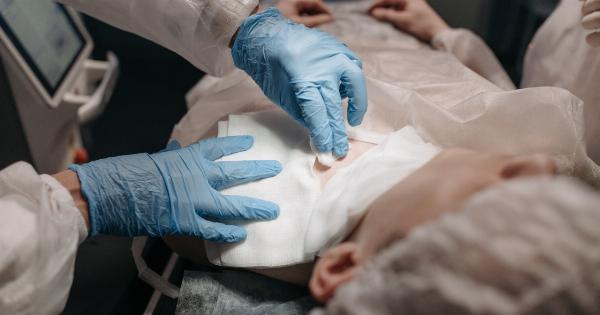A thoracic aneurysm refers to an abnormal widening or bulging of the aorta in the chest area. This serious condition puts individuals at risk of a life-threatening rupture, making prompt and effective management crucial.
In recent years, intravascular surgery has emerged as a powerful tool in the management of thoracic aneurysms, offering patients better outcomes and reduced risks compared to traditional open surgical interventions.
1. Understanding Thoracic Aneurysms
To comprehend the significance of intravascular surgery, it is important to first understand thoracic aneurysms.
This condition may be caused by various factors, including age, high blood pressure, smoking, atherosclerosis, or genetic disorders such as Marfan syndrome. As the aneurysm grows larger over time, the risk of rupture and potentially fatal internal bleeding increases significantly.
2. Traditional Surgical Approaches
Historically, the standard approach for treating thoracic aneurysms has been open surgery.
This involves making a large incision in the chest, stopping blood flow, replacing the damaged portion of the aorta with a synthetic graft, and then restoring blood circulation. While effective, open surgery carries inherent risks, including infection, prolonged hospital stays, and extended recovery periods.
3. Introduction to Intravascular Surgery
Intravascular surgery, also known as endovascular surgery, presents a minimally invasive alternative to open surgery.
It involves accessing the damaged area through small incisions in the groin or arm and using specialized catheters and devices to repair the aneurysm from the inside. This approach eliminates the need for large incisions, reduces trauma to surrounding tissues, and offers quicker recovery.
4. Endovascular Aneurysm Repair (EVAR)
Endovascular Aneurysm Repair (EVAR) is the most common intravascular technique used in thoracic aneurysm management.
During an EVAR procedure, a stent graft is inserted into the weakened section of the aorta to reinforce the vessel walls and prevent rupture. This acts as a bridge that redirects blood flow away from the aneurysm, effectively reducing the risk of rupture and providing relief for patients.
5. Advantages of Intravascular Surgery
Intravascular surgery offers several advantages over open surgical approaches:.
5.1 Minimally Invasive: The small incisions required for intravascular surgery minimize trauma to the body, resulting in less pain, reduced scarring, and faster recovery times.
5.2 Reduced Risk of Complications: Since intravascular procedures avoid major open incisions, the risk of infections, bleeding, and other post-surgical complications is significantly lower.
5.3 Shorter Hospital Stays: Patients who undergo intravascular surgery typically experience shorter hospital stays, allowing for a quicker return to normal activities and improved quality of life.
5.4 Lower Mortality Rate: Studies suggest that intravascular surgery leads to lower mortality rates compared to open surgery, further highlighting its efficacy in thoracic aneurysm management.
6. Limitations and Considerations
While intravascular surgery offers significant benefits, it may not be suitable for all patients. Factors such as the aneurysm’s size, location, and the patient’s overall health and anatomy may impact the feasibility of this approach.
Some thoracic aneurysms may require open surgery or a combined approach involving both intravascular and open techniques.
Additionally, regular follow-up appointments are essential after intravascular surgery to monitor the repaired area, identify potential complications, and ensure the long-term success of the procedure.
7. The Future of Intravascular Surgery
Ongoing advancements in medical technology continue to enhance the power of intravascular surgery in thoracic aneurysm management.
Improved imaging techniques, more versatile devices, and refined surgical skills are expanding the range of patients who can benefit from this approach. It is anticipated that intravascular surgery will become the standard of care for a majority of thoracic aneurysm cases in the near future.
Conclusion
Intravascular surgery has revolutionized the management of thoracic aneurysms, allowing for safer and more effective interventions with faster recovery times and improved patient outcomes.
Techniques like EVAR have transformed the treatment landscape, reducing the risks associated with open surgery and offering a minimally invasive alternative. While the limitations of intravascular surgery must be considered, its power in thoracic aneurysm management cannot be underestimated.























